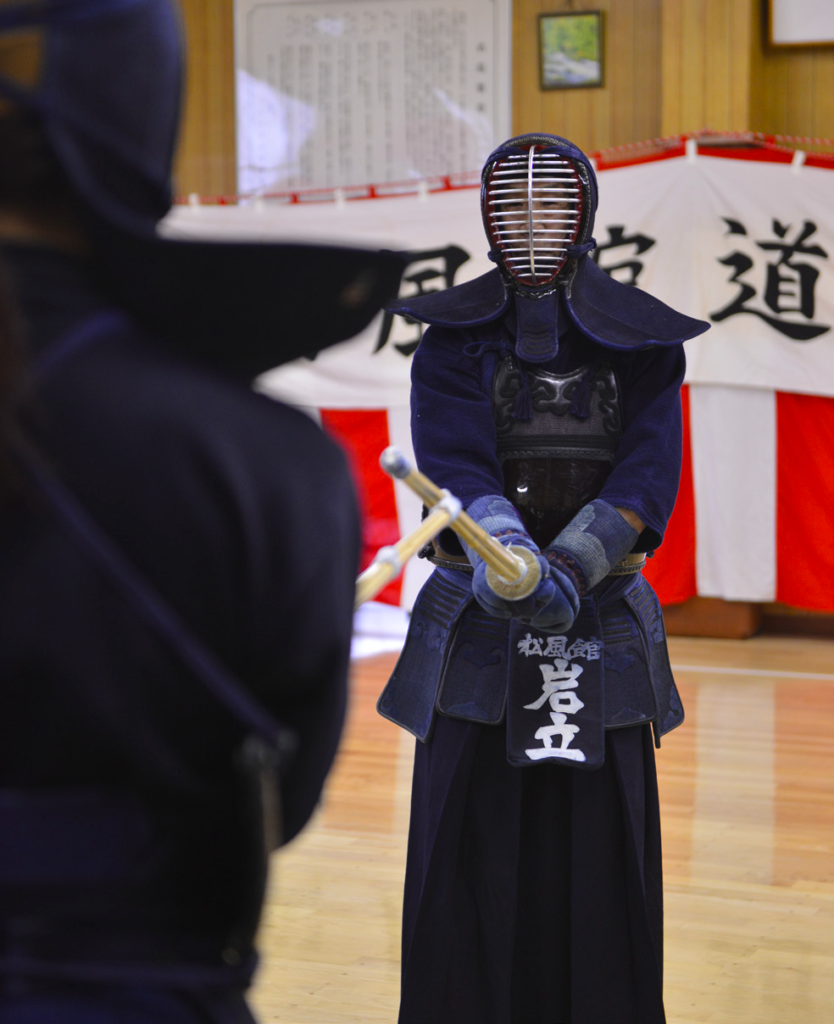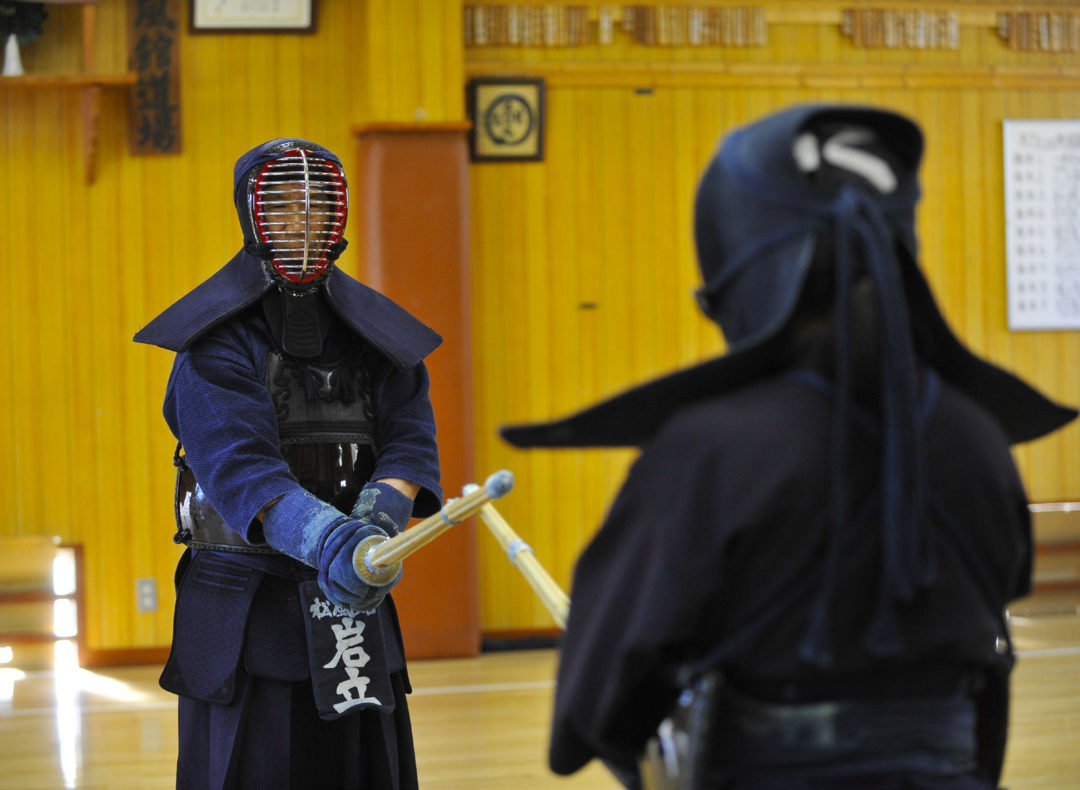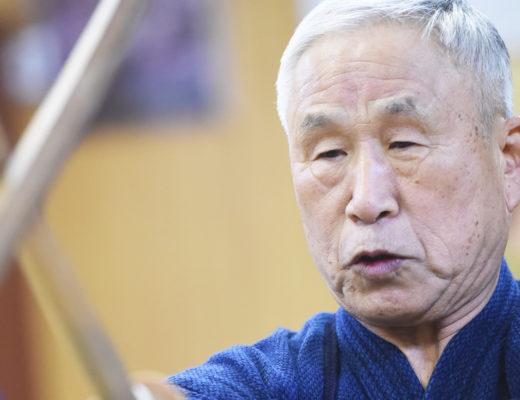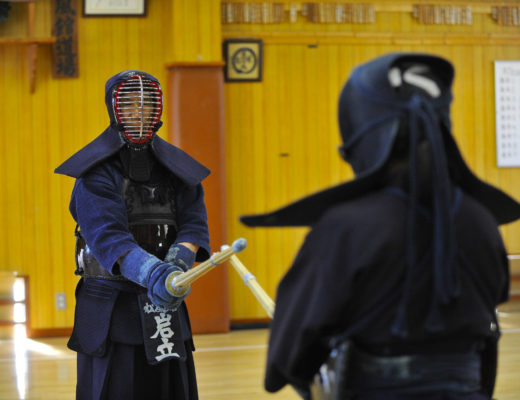Lifelong Kendo:
Kendo is “Yama Yama Kumo” (challenge after challenge)
Strive for daily improvement with a teacher
Iwatate Saburo, Hanshi 8th Dan
Born in 1939 in Chiba Prefecture. After graduating from Chiba Prefecture Narita High School, he got a job at Chiba Prefecture Police. Upon retirement from the Tokuren, Iwatate sensei served as a Kanto District Police School Instructor and Chiba Prefectural Police Kendo head teacher. Starting in 1978, Iwatate began teaching at the Shofukan Dojo and a number of swordsmen from Japan as well as overseas have gathered to ask for the guidance of Iwatate Saburo.
Currently, he is the director of Shofukan, Shobi Gakuen University kendo head teacher, the All-Japan Kendo Federation councilor, All Japan Kendo Federation vice-president and the All Japan Senior-Kenyukai chairman.
Be healthy
Too much of a good thing, too little of a bad thing
In his book “The Poem of Kendo”, Hanshi 8-dan Haga Tadatoshi Sensei wrote: “Kendo is a high mountain, but if you go over one mountain you will face another mountain with every ascent.”
Kendo can be started at any age, be continued, and be practised with any opponent no matter how old you are. Its appeal is manifold and diverse, with an infinite breadth and depth of self-fulfilment in the pursuit of challenges for every purpose. I think this is the most wonderful feature of Kendo, but you can’t do Kendo without standing in a Dojo with a Shinai in your hand. Therefore, in order to continue Kendo for a lifetime it is important to be in good health.

Takasaki Yoshio, who is over ninety years old, comes to our Shofukan to practise. He still stands Motodachi for nearly an hour and does Keiko with our pupils, and he is able to strike Men in one movement. As we get older, our muscle strength weakens and we can’t match the movements of our arms and legs, but his silhouette of doing Keiko effortlessly is my goal.
Kendo can’t be done without Keiko, but you should not overdo it. Osaki Ichiro, a Sensei of mine in Ibaraki, who has mentored me during his lifetime, said when he became an elderly person that “You should take time off before doing Keiko. You should not practice continuously. It’s not reasonable to practice when you’re tired.”
Younger generations are more mobile, so it’s important to practice hard and move your body at opportunities to strike and learn with your body. However, this kind of practice is not possible with age, and if you try to force yourself to do it you will always get injured.
One of the things I’ve been doing to stay healthy is running and cutting back on binge eating. I don’t need to explain binge eating and drinking but I think it’s important to both drink and eat in moderation.
Running is also essential for building a foundation of strength in the legs and back. Too much running can lead to injury, but running is a great workout that you can do on your own.
Have a goal
Do your best for the day
I started Kendo at the age of fifteen and was able to continue until I was seventy-five years old without any serious illness or injury.
The former president of the International Budo University, Oka Kenjiro (Hanshi 8th Dan), expressed the path of training in a Taoist poem: “I don’t know whether I will be enlightened or fall to chaos, but I will keep training in the trade of the sword without looking back.”
Kendo gives you a sense of satisfaction by just doing Keiko and sweating, but that’s only a small part of the appeal of Kendo.
I think there is a great appeal in setting goals and receiving instruction from appropriate instructors to improve your ability.
The rest of this article is only available for Kendo Jidai International subscribers!





